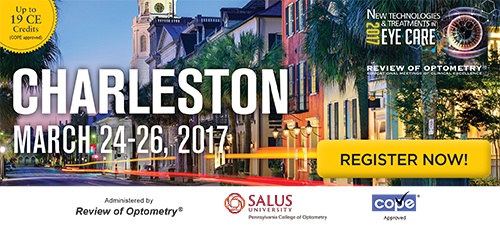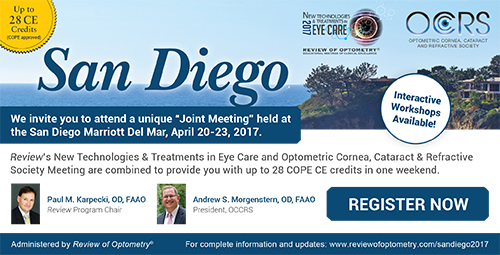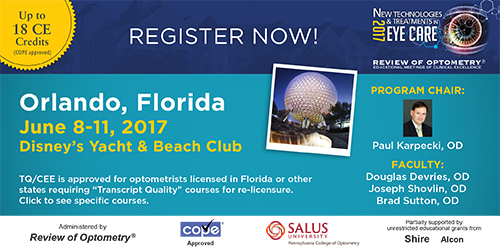
A
weekly e-journal by Art Epstein, OD, FAAO
Off the Cuff: True Leadership
Lately, I’ve observed a flurry of self-promotion on social media. Self-proclaimed experts and imagined leaders unabashedly toot their own horns with little substance to support their self-aggrandizement. No, I won’t name names or cite specifics. What I will do is personally recognize just a few of the individuals who have made a real difference in our profession, sometimes at significant personal cost. They are among my heroes. Paul Karpecki is so well known as an educator that his work behind the scenes often goes unnoticed. Ben Gaddie is among optometry’s staunchest and most vocal advocates and a brilliant educator. That’s just the tip of the iceberg of Ben’s work for optometry. Kirk Smick is an old friend who has had a long and distinguished career. You might not know the man defined modern optometric continuing education. Murray Fingeret is a world-class glaucoma expert, but his work with education and with ophthalmology has opened more doors for our profession than you might imagine. Many of our colleagues eschew the spotlight. My friend Mike Ohlson of West Union, Iowa, past president of ARBO, has stood up for the profession in more ways than I could possibly share. In Arizona, our CE chair, Annette Hanian, has been so relentless in support of optometry that her work has largely defined contemporary practice in the state. Without industry support of education and our professional organizations, optometry would not be where it is today. Standouts include Millicent Knight, VP of professional affairs at Vistakon, who is an amazingly effective advocate. Bob Dempsey, VP and head of Shire’s eye care franchise, has redefined industry relations with the eye care professions. Todd Love, director of professional strategy for B+L, has been among the profession’s most connected and empowering advocates for optometry, often working behind the scenes. Finally, Dave Sattler, retired director of professional relations at Alcon, conceived of Power of the Pen, a program that drove optometric prescribing at a time when OD prescribing was in its infancy. I should note that this list is by no means complete, but importantly, each individual was included because of selfless contributions and meaningful accomplishments — most of them performed quietly, often behind the scenes, and without accolades. Each deserves our gratitude for true leadership.
|
|||||

|
||
| Smoking and Incidence of Glaucoma: The SUN Cohort | ||||
Though smoking is a serious global public health concern that has been related to many chronic diseases, the effect of smoking on eye disorders has been less studied, researchers wrote. The aim of this cohort study was to assess the association between current tobacco smokers and the risk of developing glaucoma, and, furthermore, to evaluate the relationship between passive or former smokers and glaucoma. In this prospective and dynamic cohort, 16,797 participants initially who were found not to have glaucoma were followed up for a median of 8.5 years. Validated data on lifestyle, including tobacco consumption, were assessed at baseline. Information about new diagnosis of glaucoma was collected by follow-up questionnaires every two years. The outcome measure was the incidence of self-reported glaucoma during the follow-up. A subsample was used to validate the glaucoma diagnosis.
During the 8.5 years of follow-up, 184 new glaucoma cases were identified. Current smokers had a significantly higher risk of glaucoma compared with participants who had never smoked, after controlling for potential confounders. A nonsignificant increased risk was found among former smokers. When we assessed the exposure per the number of cigarette pack-years, a dose-response relationship between pack-years and the risk of glaucoma was found. However, no relationship was found between passive smokers and glaucoma. Researchers concluded that the results suggested a direct association between current smokers and the incidence of glaucoma, particularly related to the number of pack-years, which was not found in the case of former smokers nor in the case of passive smokers. |
||||
SOURCE: Pérez-de-Arcelus M, Toledo E, Martínez-González MÁ, et al. Smoking and incidence of glaucoma: The SUN Cohort. Medicine (Baltimore). 2017;96(1):e5761. |
||||
| U.S. Outcomes of Infectious vs. Sterile Perforated Corneal Ulcers After Therapeutic Penetrating Keratoplasty | ||||
The charts of 45 consecutive eyes that underwent primary therapeutic penetrating keratoplasty for a perforated corneal ulcer at a single center were retrospectively reviewed to compare the long-term outcomes of infectious vs. sterile perforated corneal ulcers after therapeutic penetrating keratoplasty in the United States. The perforated ulcers were classified as infectious or sterile, and the underlying demographics, clinical features and 36-month outcomes were compared among the two groups. Mean follow-up among subjects was 38.6 (±6.9) months. Patients presenting with sterile perforated ulcers were more likely to have a peripheral perforation location and recurrence of the underlying disease condition, require adjunctive surgical measures in the immediate postoperative period, have reperforation after keratoplasty, have worse best-corrected visual acuity, develop no light perception vision and require enucleation/evisceration when compared to the infectious perforated ulcer group. Investigators determined that sterile perforated corneal ulcers had a worse prognosis and may be more frequent than those caused by infectious disease in the United States compared with the developing world. |
||||
SOURCE: Rush SW, Rush RB. Outcomes of infectious versus sterile perforated corneal ulcers after therapeutic penetrating keratoplasty in the United States. J Ophthalmol. 2016;2016:6284595. |
||||
| Acute Central Serous Chorioretinopathy: Factors Influencing Episode Duration | ||||
Consecutive patients with first, treatment-naïve central serous chorioretinopathy (CSCR) episodes presenting within 20 days of symptoms onset were prospectively included to evaluate the influence of clinical and multimodal imaging parameters on the duration of acute CSCR episodes. They were reevaluated 15 days to 20 days later, followed by monthly evaluation for six months. Subfoveal choroidal thickness (SFCT), fluorescein leakage intensity on fluorescein angiography, elevation of retinal pigment epithelium (RPE) lesions at leakage sites, focal/multifocal pattern of indocyanine green angiography (ICGA) at baseline, time-dependent pattern of subretinal fluid (SRF) resorption on OCT using volume segmentation, history of corticosteroid intake and mean blood pressure were evaluated using univariate (Log rank test) and multivariate (Cox proportional hazard regression) survival analysis. Thirty-one patients were included (26 men, five women, mean age: 40.0±8.9 years, range: 24 to 58), of which 26 (84%) had episode resolution by six months. Using univariate analysis, it was determined that episode duration was longer in cases with subfoveal choroidal thickness ≥500 μm, retinal pigment epithelium elevation at leakage sites ≥50 μm and a peak in subretinal fluid observed during follow-up, and a near-significant association of intense fluorescein leakage with longer episodes was noted. Using multivariate analysis, researchers found that subfoveal choroidal thickness ≥500 μm, retinal pigment epithelium elevation at leakage sites ≥50 μm and patient age ≥40 years were significantly and independently associated with longer episodes. Indocyanine green angiography pattern, corticosteroid intake and blood pressure did not influence episode duration. Researchers wrote that older age, higher subfoveal choroidal thickness and higher degree of retinal pigment epithelium alteration at leakage sites were independent factors for longer acute central serous chorioretinopathy episodes. |
||||
SOURCE: Daruich A, Matet A, Marchionno L, et al. Acute central serous chorioretinopathy: Factors influencing episode duration. Retina. 2017; Jan 6. [Epub ahead of print]. |
||||
 |
||
 |
||
| News & Notes | |||||||||
| Bausch + Lomb Ultra for Presbyopia Contact Lenses Parameters Expanded Bausch + Lomb announced that that the company’s Ultra for Presbyopia contact lenses are now available in an expanded parameter range. Since the contact lenses first launched in February 2016, the contact lenses have been available in parameters between -7D to +2D. The expansion now extends the power range available to eye care professionals and patients to +4.50D to -10.00D (in 0.25D steps) in both low add and high add. Read more. |
|||||||||
| Ocular Therapeutix Releases Topline Results of Second Phase III Clinical Trial
Ocular Therapeutix announced topline results from its second Phase III clinical trial to evaluate the safety and efficacy of Dextenza (sustained release dexamethasone) Intracanalicular Depot for the treatment of ocular itching associated with chronic allergic conjunctivitis. Dextenza is a product candidate administered by a physician as a bioresorbable intracanalicular depot and designed for drug release to the ocular surface for up to 30 days. The single primary endpoint of the trial, defined as the difference in the mean scores in ocular itching between the treatment group and the placebo comparator group at three time points seven days following insertion of the depots, was not achieved. In the second Phase III clinical trial, as well as other Dextenza clinical trials completed to date regardless of indication, Dextenza has exhibited a strong safety profile and has been generally well-tolerated. There were no serious adverse events observed in the second Phase III clinical trial. Read more. | |||||||||
| Shire Ophthalmics Submits Regulator Filing for Canada Shire Ophthalmics CEO Flemming Ornskov announced at a JP Morgan Healthcare conference this month that the company had submitted a regulatory filing for Xiidra (lifitegrast ophthalmic solution) in Canada in the fourth quarter of 2016. The twice-daily prescription eye drop is indicated for the treatment of the signs and symptoms of dry-eye disease, and is available by prescription in the United States. The U.S. Food and Drug Administration approved Xiidra on July 11. Read more. |
|||||||||
| Roche Acquires ForSight Vision4 Roche Holdings Inc. has acquired ForSight Vision4, a privately held biotechnology company revolutionizing drug delivery for treatment of retinal diseases. The acquisition expands Roche's exclusive access to the ForSight Vision4 PDS technology for long-acting delivery of therapeutics to the eye. In 2010, ForSight Vision4, Inc. announced a Collaboration and License Agreement with Genentech, a member of the Roche Group, for exclusive rights to use ForSight Vision4's proprietary drug delivery technology for the target VEGF-A. Read more. |
|||||||||
| China FDA Approves Paragon CRT Contact Lenses Paragon Vision Sciences announced China Food and Drug Administration approval and commercial availability of its corneal reshaping/orthokeratology brand, Paragon CRT contact lenses. The contact lenses are now available in 50 countries around the world, including the United States. Essilor China will serve as the exclusive distributor for Paragon CRT Contact Lenses in China. The lenses will be widely available to eye care practitioners within the next few months. Read more. |
|||||||||
|
Optometric Physician™ (OP) newsletter is owned and published by Dr. Arthur Epstein. It is distributed by the Review Group, a Division of Jobson Medical Information LLC (JMI), 11 Campus Boulevard, Newtown Square, PA 19073. HOW TO ADVERTISE |


